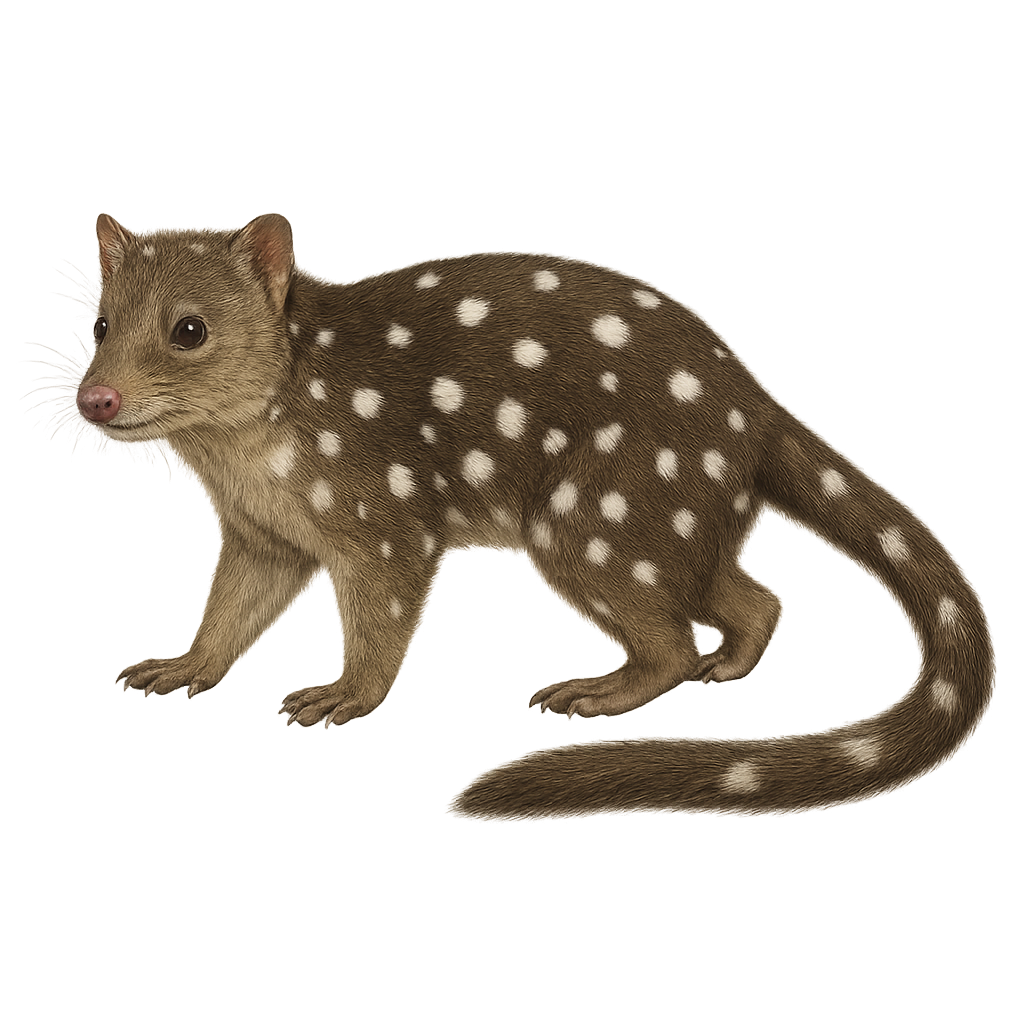Your wildlife photography guide.
Explore the spotted-tailed quoll in detail, study its behavior, prepare your shots.
Where to observe and photograph the spotted-tailed quoll in the wild
Learn where and when to spot the spotted-tailed quoll in the wild, how to identify the species based on distinctive features, and what natural environments it inhabits. The WildlifePhotographer app offers tailored photography tips that reflect the spotted-tailed quoll’s behavior, helping you capture better wildlife images. Explore the full species profile for key information including description, habitat, active periods, and approach techniques.
Spotted-tailed quoll
Scientific name: Dasyurus maculatus

IUCN Status: Near Threatened
Family: DASYURIDAE
Group: Mammals
Sensitivity to human approach: Shy
Minimum approach distance: 10 m
Rut period: June to August
Gestation: 21-24 jours
Births: June to September
Habitat:
Rainforests, temperate woodlands
Activity period :
Mainly active at night, generally discreet during the day.
Identification and description:
The spotted-tailed quoll, or Dasyurus maculatus, is a carnivorous marsupial native to Australia. It is characterized by its brown fur with white spots, a long tail, and a slender build. This agile predator is primarily nocturnal, feeding on small mammals, birds, and insects. It inhabits various environments, from rainforests to temperate woodlands. Although a solitary hunter, it can sometimes be seen in small groups during the breeding season. The spotted-tailed quoll plays a crucial role in the ecosystem by regulating prey populations. However, its population is declining due to habitat loss and predation by introduced species.
Recommended lens:
400 mm – adjust based on distance, desired framing (portrait or habitat), and approach conditions.
Photography tips:
To photograph the spotted-tailed quoll, focus on nighttime hours as this animal is primarily active at night. Use a telephoto lens of at least 400mm to capture sharp images from a distance, maintaining a safety distance of about 10 m to avoid disturbing it. Look for areas where it is likely to hunt, such as forest edges. Be patient and discreet, as the quoll is shy and can be difficult to spot. A tripod and good ISO sensitivity will help you get clear shots in low-light conditions.
The WildlifePhotographer App is coming soon!
Be the first to explore the best nature spots, track rutting seasons, log your observations, and observe more wildlife.
Already 1 432 wildlife lovers subscribed worldwide

